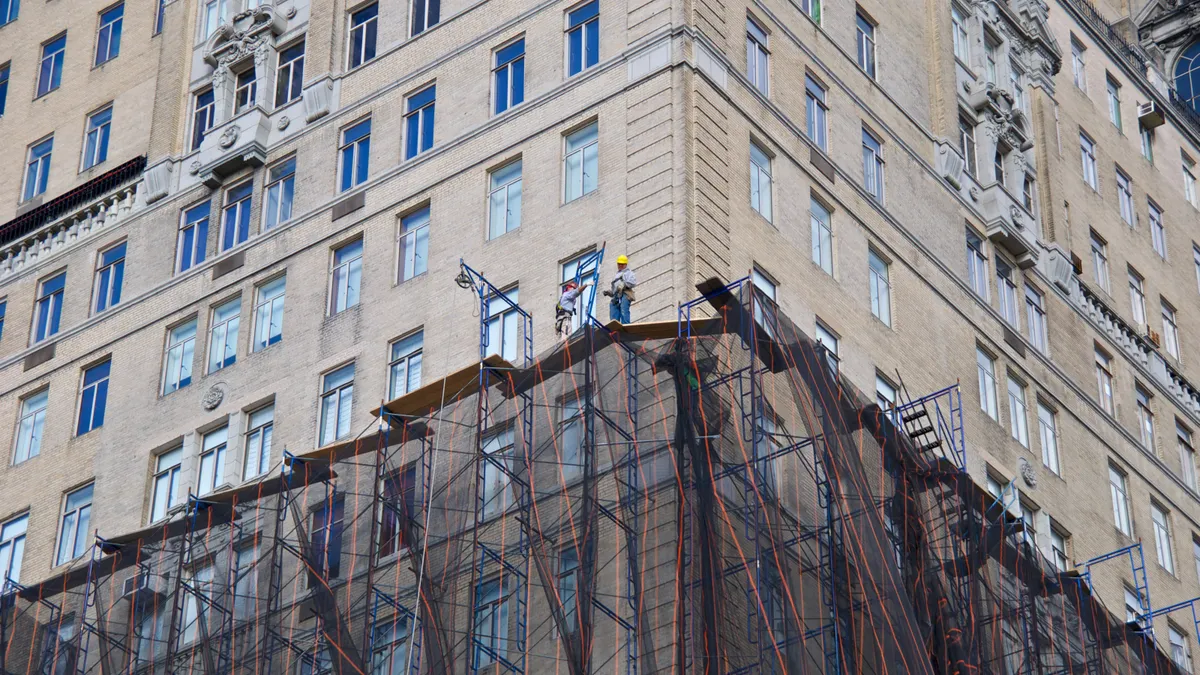Two days after six young adults, including five Irish exchange students, died during a balcony collapse in Berkeley, CA, early Tuesday morning, officials have not officially revealed what caused the deck to fall.
But engineers who have inspected the damage or pictures of it have blamed dry rot and too much weight for the fatal accident, which also seriously injured seven others who reportedly were standing on the fifth-story balcony of an eight-year-old apartment building during a birthday party.
What happened?
The balcony “didn’t have enough residual strength” to support the 13 people who reportedly were gathered on it at the time of the collapse, apparently because some of the wood beams supporting the structure had rotted, according to Gene St. Onge, a civil and structural engineer who inspected photographs of the fallen deck and spoke to a number of news organizations on Tuesday. “It appeared to be shredded and darkened and had all the appearance of wood that had been totally compromised by dry rot.”
However, St. Onge said, even if the students “were jumping up and down,” deck boards built to code “should still have held.”
But a former member of the Berkeley Design Review Committee, which approved the balcony’s construction in 2001, told The San Francisco Chronicle that the deck was too small to support 13 people. “This was meant just to be a place where someone could stand out for a bit, get a breath of fresh air,” Carrie Olson told the newspaper. “Not for something like 13 people.”
A structural engineer who spoke to The Washington Post agreed, saying California building codes at the time when the eight-year-old balcony was constructed required such structures to support 60 pounds per square foot. If the students were dancing or moving on the balcony, engineer Grace Kang told the newspaper, it would have put further strain on the structure.
'A dark, dark day'
Berkeley Mayor Tom Bates, during a press conference Tuesday afternoon at City Hall, said the collapse served as "a wake-up call" regarding new construction. "I think there are 13 buildings under construction in Berkeley right now… We certainly don’t want this kind of thing to happen” there.
Watch the press conference here.
Berkeley city and police officials said at the press conference they found no evidence of a crime leading to the collapse. They have released the building’s safety inspection history to the public. And a structural engineer for Blackrock — the investment company that advises the property fund that owns the apartment building, and Greystar — the Texas-based company that manages it — will investigate the cause of the accident.
Some media reports, however, have speculated that the building owners could be liable if it turns out they did not meet safety standards. And St. Onge said if officials learn the architect did not correctly design the balcony or if the contractor did not properly install it, they could find themselves in court.
Who’s to blame?
Anything from too much weight to water damage could cause a deck to collapse. And because most balconies and decks are above ground level, anyone standing on one that falls is unlikely to escape injury.
Everyone from the building owner to the architect to the builder to the framing contractor has a role in ensuring the safety of a deck.
But when a deck or balcony fails, it’s not always clear where to point the finger.
Builders often defend themselves against liability by proving they constructed their decks according to code or by claiming they are not responsible for the performance of a structure that they built decades ago.
But Austin attorney Brooks Schuelke noted in a blog post: “When a contractor or builder doesn’t build a building or other structure properly, then the builder faces liability for injuries caused by the improper construction.” Most often, he wrote, the charge is negligence.
In recent deck-related tragedies involving legal action, courts have sometimes held building owners responsible and punished them. Often, however, the contractor settles out of court rather than taking a chance with a jury. A few examples of these cases:
2010: A retired general contractor who helped his friend hire subcontractors to build a deck at the friend's Wichita, KS, home had to pay $80,000 — covered by his insurance company — after the structure collapsed during a party, killed a man and seriously injured several others. The homeowner’s insurance paid another $1.6 million. And the deck builder — whose insurance company also covered his part of the settlement — was on the hook for $500,000. His insurance company filed for bankruptcy shortly afterward.
2010: Homebuilder Town and Country Homes paid $1 million to a Cary, OH, woman who broke her ankle when her second-story deck tore away from the back of her home. The builder called the mishap “an isolated incident.”
2014: Schuler Homes claimed it was not responsible for the collapse of a deck that it built on the back of a home more than a decade earlier. Two dozen party guests were on the balcony posing for a photo when the deck gave way and they fell 15 feet to the ground. Several people suffered from broken bones. The family’s lawsuit has not been settled.
Common causes
The North American Deck and Railing Association estimates that 2.5 million decks are built each year. At the time of construction, deck builders can prevent four of the most common causes for deck collapses by taking care during installation to:
- Use lumber treated with preservatives that will prevent the deck boards from rotting.
- Screw, don’t nail, the deck to the building using zinc-coated, corrosion-resistant fasteners, joint hangers and anchors made from galvanized steel, stainless steel, silicon bronze or copper. Local building codes detail the size and number of fasteners required.
- Laterally brace the deck to anchor it against strong winds. Install footings that will support the deck from downward loads and prevent it from lifting during a wind-driven storm.
- Install guardrails on any deck, porch or balcony that is more than 30 inches off the ground. Most codes require the railings to be at least 36 inches high with slats every four inches. Similar rules apply to railings on staircases.
Extra steps for prevention
Even a well-constructed deck is at risk of collapsing if it’s overloaded, poorly maintained or has outlived its expected lifespan. And even deck builders who followed every rule and took every precaution could find themselves on the wrong end of a liability lawsuit if a by-the-book balcony falls and injures someone.
Although building codes do not require it, it’s not a bad idea for contractors to take an extra step toward preventing a deck collapse: Educating the building’s owners about the importance of weight limits and maintenance to keep the structure safe. Here are six tips to pass along:
- Leave a sign behind that posts the maximum capacity for the balcony or deck so that the building owner will know. Still, California law does not require apartment owners to post weight limits. Also, advise the owner that a pileup of snow on a deck can be heavier than a group of people, and can lead an otherwise empty deck to collapse.
- Advise owners that decks do not last forever; in fact, deck professionals give even the best-made structures a lifespan of 15 years. Rusted nails or fasteners can be compromised. Splinters, loose or warped boards and popped nails are signs of deterioration. A remodeler brought in for another job at an apartment building, hotel or home can notice the warning signs and offer his or her services for repairing or replacing the deck.
- Professional deck builders know local codes for deck-building, and follow them strictly, as that is the first thing an inspector will check for after a deck has collapsed. A sharp-eyed contractor in a building for another job could add to his or her to-do list by pointing out that an older deck built to yesterday’s code is due for an update. One easy fix that could save lives: Older decks often have railings that are too low for safety because outdated codes allowed them to be built at shorter heights.
- Leave instructions for the building owner about how to maintain the deck. Railings and supports should be regularly examined for broken or missing pieces; decks need regular cleaning, as dirt, water, dead animals and falling leaves can decay the wood.
- Any movement or swaying on the deck can indicate that the structure needs cross-bracing. Alert the owner to call for repairs and stay off of the deck if it starts to move.
- Encourage building owners to have their decks inspected periodically so dry rot and other issues that could compromise the structure can be repaired before they lead to tragedy. The North American Deck and Railing Association estimates that at least 40 million residential decks and 10 million commercial decks in the U.S. are at least 20 years old.




















